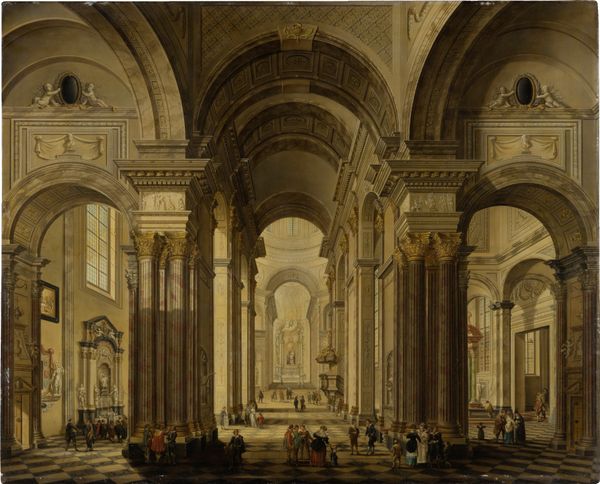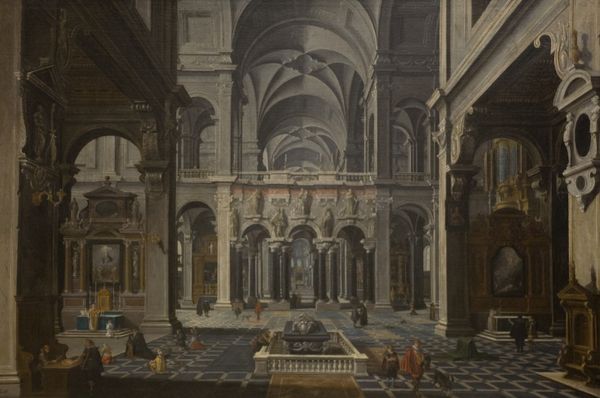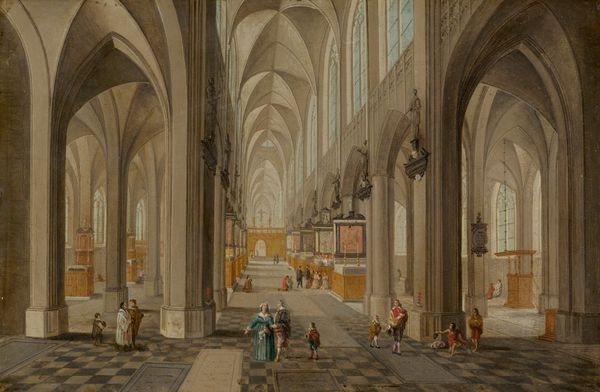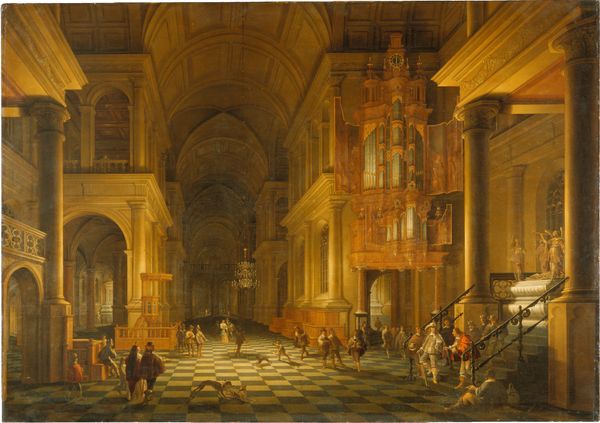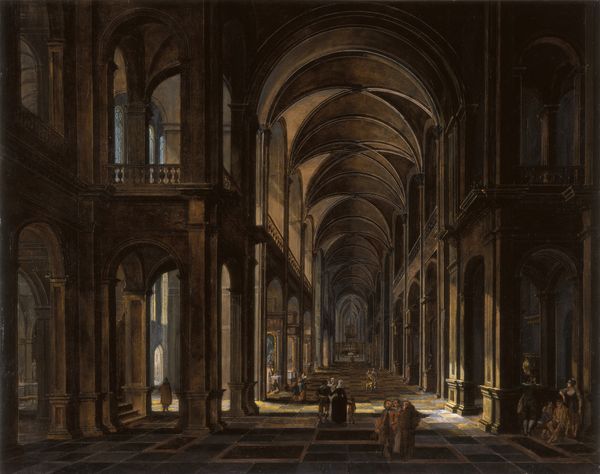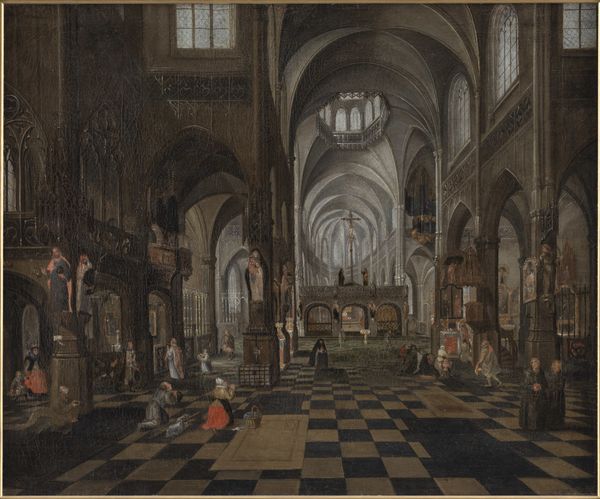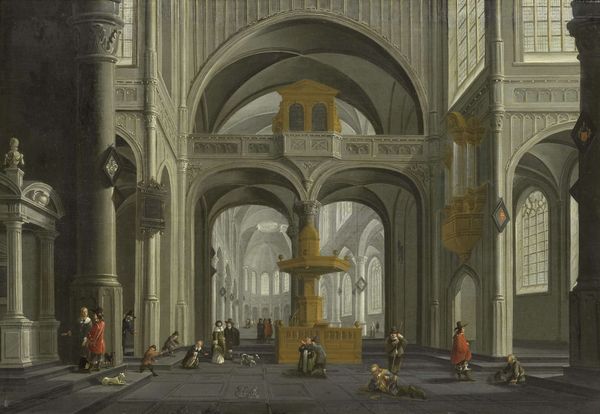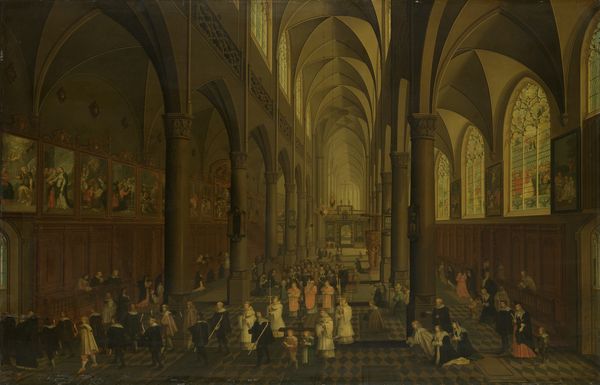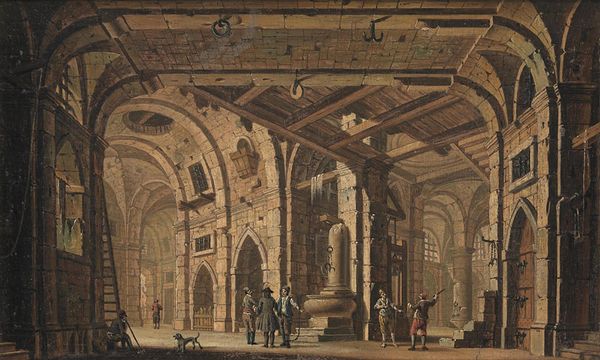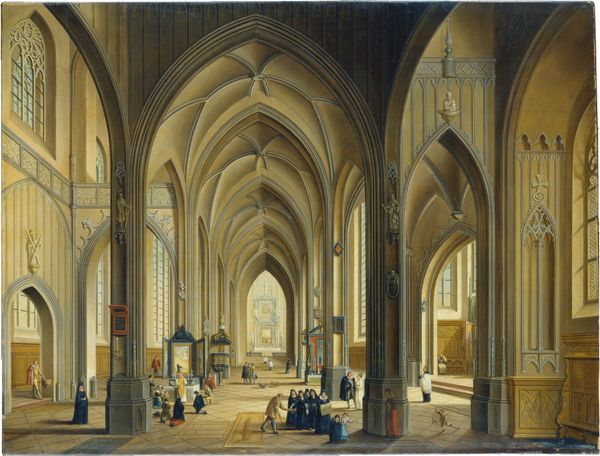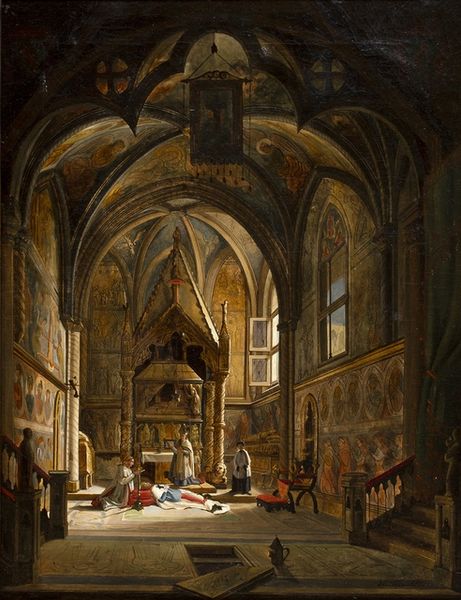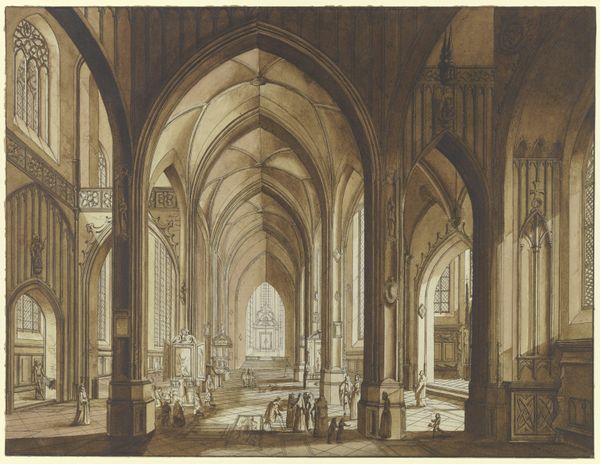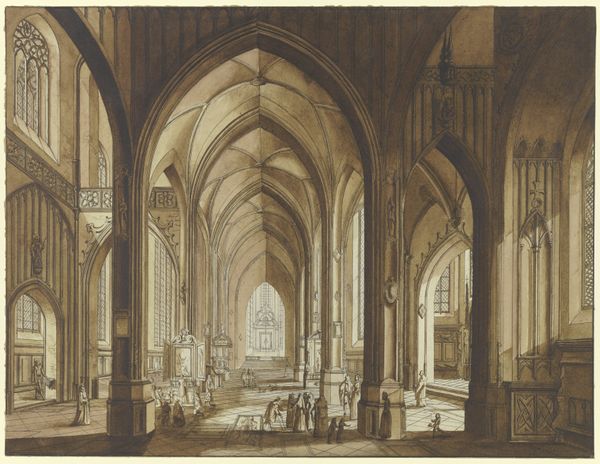
oil-paint, sculpture, architecture
#
baroque
#
oil-paint
#
sculpture
#
landscape
#
perspective
#
figuration
#
sculpture
#
15_18th-century
#
chiaroscuro
#
genre-painting
#
history-painting
#
architecture
Dimensions: 23.7 x 31.1 x min. 0.3 cm
Copyright: Public Domain
Curator: Standing before us is "Church Interior," currently attributed to Christian Stöcklin. The artwork can be found here at the Städel Museum and showcases the artist's engagement with Baroque ideals and painting. Editor: The word that comes to mind is "ominous"—a quiet grandeur tinged with something melancholic. All that architectural detail feels heavy. I think I’m responding most to the dark hues. Curator: The chiaroscuro effect is certainly dramatic. That strategic play of light and shadow really amplifies the sense of depth and vastness. This also might speak to how religious institutions project their influence. How light becomes not just a visual tool, but a symbolic assertion. Editor: The architecture itself, those soaring arches and seemingly endless rows of columns, feels like an echo of something beyond human reach. It almost doesn't matter who’s milling around inside. But how do you feel about all that? Does the baroque style bring more gravity than divinity? Curator: In the context of the time, and as a painter of church interiors, Stöcklin was contributing to a visual culture that reinforced the church's presence and authority. The carefully constructed perspective directs your eye to specific focal points, subtly guiding your gaze and, by extension, perhaps even your thoughts. This control would shape its social image at the time. Editor: That almost makes the few figures painted inside incidental—mere bystanders overshadowed by the architecture of power. And the material: seeing that this is all oil paint, I can almost smell it. Is that strange? To smell history? Curator: Not strange at all. Oil paint offered the perfect medium for achieving those realistic textures and luminous effects, enhancing the illusion of depth and detail. It’s interesting how materials become cultural artifacts too. Each tells a particular story, which in this case allows him to capture a sense of vastness in a small frame, and what impact the Church had during that time period. Editor: A material imprint on a spiritual space. Thinking of it that way helps me find more resonance within those echoing walls. Thanks for letting me reconsider the depths of the Baroque!
Comments
No comments
Be the first to comment and join the conversation on the ultimate creative platform.
